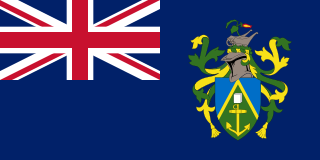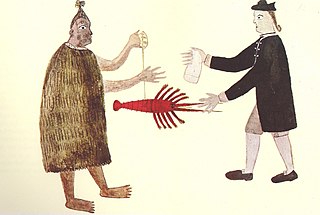
The Pitcairn Islands, officially the Pitcairn, Henderson, Ducie and Oeno Islands, is a group of four volcanic islands in the southern Pacific Ocean that form the sole British Overseas Territory in the Pacific Ocean. The four islands—Pitcairn, Henderson, Ducie and Oeno—are scattered across several hundred miles of ocean and have a combined land area of about 18 square miles (47 km2). Henderson Island accounts for 86% of the land area, but only Pitcairn Island is inhabited. The islands nearest to the Pitcairn Islands are Mangareva to the west and Easter Island to the east.

Sex education, also known as sexual education, sexualityeducation or sex ed, is the instruction of issues relating to human sexuality, including emotional relations and responsibilities, human sexual anatomy, sexual activity, sexual reproduction, age of consent, reproductive health, reproductive rights, sexual health, safe sex and birth control. Sex education which includes all of these issues is known as comprehensive sex education, and is often opposed to abstinence-only sex education, which only focuses on sexual abstinence. Sex education may be provided by parents or caregivers or as part at school programs and public health campaigns. In some countries it is known as Relationships and Sexual health education.
In secular usage, religious education is the teaching of a particular religion and its varied aspects: its beliefs, doctrines, rituals, customs, rites, and personal roles. In Western and secular culture, religious education implies a type of education which is largely separate from academia, and which (generally) regards religious belief as a fundamental tenet and operating modality, as well as a prerequisite for attendance.
The education system in New Zealand is a three-tier model which includes primary and intermediate schools, followed by secondary schools and tertiary education at universities and polytechnics. The academic year in New Zealand varies between institutions, but generally runs from early February until mid-December for primary schools, late January to late November or early December for secondary schools and polytechnics, and from late February until mid-November for universities.

Pulau Ubin, also simply known as Ubin, is an island situated in the north-east region of Singapore, to the west of Pulau Tekong and directly north of Pasir Ris on the mainland. The granite quarry used to be supported by a few thousand settlers on Pulau Ubin in the 1960s, but this figure has decreased to 38 villagers as of 2012. Ubin is the largest outlying island of Singapore that are for civilian use, being twice as large as Sentosa.

Education in Indonesia falls under the responsibility of the Ministry of Education, Culture, Research, and Technology and the Ministry of Religious Affairs. In Indonesia, all citizens must undertake twelve years of compulsory education which consists of six years at elementary level and three each at middle and high school levels. Islamic, Christian, Catholic, and Buddhist Schools are under the responsibility of the Ministry of Religious Affairs.
South Island School is a private international school founded by the English Schools Foundation of Hong Kong, located at 50 Nam Fung Road, Aberdeen, Hong Kong, with about 1,400 students enrolled and 107 teachers. Students come from diverse backgrounds, with over 38 nationalities represented. The school offers the GCSE/IGCSE syllabus, IB Diploma Programme, IB Career-related Programme and the BTEC qualification. The school is one of three ESF secondary schools on Hong Kong Island, the others being West Island School and Island School.

Van Asch Deaf Education Centre was located in Truro Street, Sumner, Christchurch, New Zealand. It was a special school for deaf children, accepting both day and residential pupils, as well being as a resource centre providing services and support for parents, mainstream students and their teachers in the South Island and the Lower North Island.
The education system in Qatar is jointly directed and controlled by the Supreme Education Council (SEC) and the Ministry of Education and Higher Education (MOEHE) at all levels. The SEC is responsible for overseeing independent schools, whereas the MOE is responsible for providing support to private schools. Formal schooling officially began in 1956. Primary schooling is obligatory for every child and is free in public schools.

The development of state education in New Zealand has been shaped by social and political interactions between Māori as tangata whenua of the land, missionaries, settlers, voluntary organisations and those charged with consolidating central state control. While the initiatives and systems were driven by colonial ambitions to protect and civilise the indigenous people through assimilation, and install a model of education based on European concepts of the purposes and delivery of learning, there have been times when Māori actively engaged with the process to retain their traditional knowledge and language. Examples of this were Māori participation in the early missions schools, contestation and resistance against many processes of Native schools and the establishment of Kura Kaupapa Māori. Following the signing of the Treaty of Waitangi in 1940, New Zealand became a British Crown Colony, and by 1852 the state of New Zealand had assumed a full legislative role in education. A series of acts of parliament have attempted to resolve differences between competing interests as the country faced social, cultural and economic challenges. This has continued, arguably, as a desire for democratic and progressive education and the creation and ongoing reform of an education system that aims to reduce inequalities and enable social mobility. As a response to criticism of the education system and the role of the state in managing and delivering equitable learning, there were radical reforms in the late 1980s. These changes resulted in the establishment of self-managing schools and a decentralization of the system, with the Department of Education being replaced by the Ministry of Education whose role has been to implement government reforms. Some of these, in governance models for schools, assessment and reporting, class sizes, payroll, school closures and building maintenance, have been controversial.

Papakura is a southern suburb of Auckland, in northern New Zealand. It is located on the shores of the Pahurehure Inlet, approximately 32 kilometres south of the Auckland CBD. It is under the authority of the Auckland Council.
Nukutere College is a Roman Catholic secondary school located in Avarua, Rarotonga, Cook Islands. It is the country’s only Catholic secondary school and has an important educational role across the archipelago. "Nukutere" means "people on a journey", a reference to the pilgrim Church in the South Pacific context.
Pitcairn Islanders, also referred to as Pitkerners and Pitcairnese, are the inhabitants or citizens of the Pitcairn Islands. The Pitcairn Islands are a British Overseas Territory, mainly inhabited by Euronesians of British and Tahitian descent.

Western-style education was introduced to Bhutan during the reign of Ugyen Wangchuck (1907–26). Until the 1950s, the only formal education available to Bhutanese students, except for private schools in Ha and Bumthang, was through Buddhist monasteries. In the 1950s, several private secular schools were established without government support, and several others were established in major district towns with government backing. By the late 1950s, there were twenty-nine government and thirty private primary schools, but only about 2,500 children were enrolled. Secondary education was available only in India. Eventually, the private schools were taken under government supervision to raise the quality of education provided. Although some primary schools in remote areas had to be closed because of low attendance, the most significant modern developments in education came during the period of the First Development Plan (1961–66), when some 108 schools were operating and 15,000 students were enrolled.

The Seventh-day Adventist Church in Tonga, is one of the smaller religious groups in the South Pacific island state of Tonga with a reported 3,853 members as of June 30, 2020, started by Seventh-day Adventist missionaries from the United States who visited in 1891 and settled in 1895. They set up schools but made very little progress in conversion, handicapped by dietary rules that prohibited popular local foods such as pork and shellfish, and that also banned tobacco, alcohol and kava.

The postal history of the Pitcairn Islands began with letters being sent without postage stamps, as none were available on Pitcairn. In 1921, the United Kingdom and New Zealand formally agreed upon a system to handle post from the island, but this arrangement was ended in 1926. In 1927, stamps from New Zealand were introduced. To improve the revenue generation of the colony, the British government established an official post office on the island in 1940. The opening of this post office saw the issuance of the first set of Pitcairn Islands stamps.

Christchurch Adventist School (CAS) is a co-educational composite school in Papanui suburb of Christchurch, New Zealand. It is owned and operated by the Seventh-day Adventist Church.
Education is based on three-tier model which includes primary schools, followed by secondary schools and tertiary education at universities or other institutes of same level. Education Department of the Government of Delhi is a premier body which looks into the educational affairs.the RTE right to education also describes children from the age of 6 to 14 have to cumpulsolarily need to be educated. 25% of the seats in all private schools are also reserved for the under-privileged children. Tertiary education is administrated by the Directorate of Higher Education.

Education in Jersey is overseen by the Department for Children, Young People, Education and Skills. The Government is responsible for all Government-maintained schools on the island, including the Further Education College, Highlands College, as well as the fee-paying schools of Victoria College and Jersey College for Girls. There are also independent schools and religious schools, including De La Salle College, Beaulieu Convent School and St Michael's School.
Aotearoa New Zealand's histories (ANZH) and Te Takanga o Te Wā are documents for use in English- and Maori-medium New Zealand curriculums from 2023 to guide the explicit and compulsory teaching about the country's history. Although the final documents, released in 2022, were part of reviews of the Aotearoa New Zealand education system by the newly elected Labour government from 2017, there had been pressure building prior to this for the focus of the reforms to be on developing a curriculum that truly reflected the history of New Zealand. This had included a petition taken to parliament in 2017 by high school students expressing concerns about how the New Zealand wars were being taught, ongoing debate in the media amongst academics and educationists and another petition urging teaching of New Zealand histories to be compulsory. In response to this, the government created an advisory group in 2018, and in 2019 initiated a recommendation from the group to establish an agreed process for updating the National Curriculum. After a process of consultation, draft documents were trialled and reviewed in 2021 and the final copies launched in March 2022, with the expectation that schools will have the reforms implemented by 2023.















